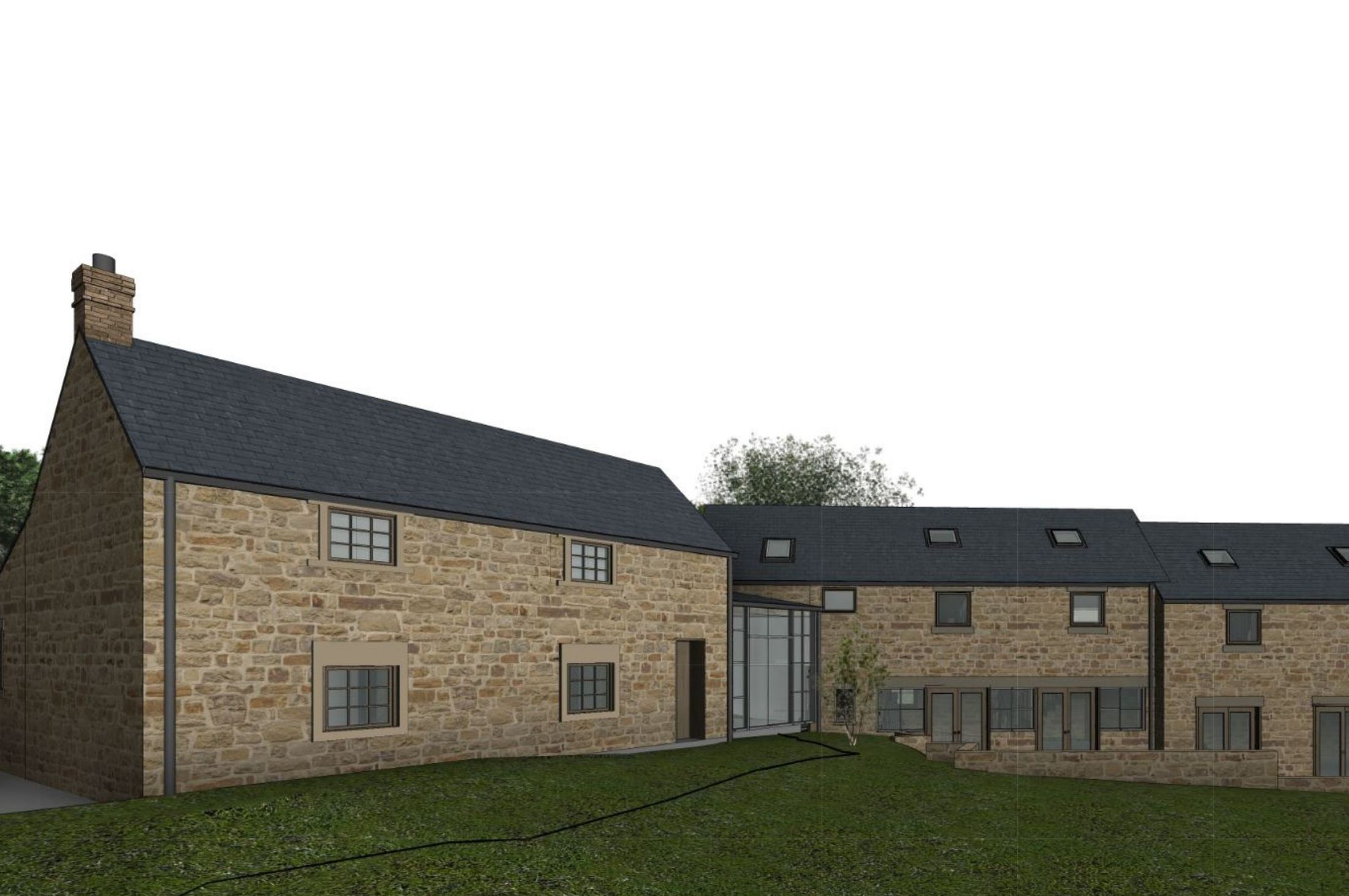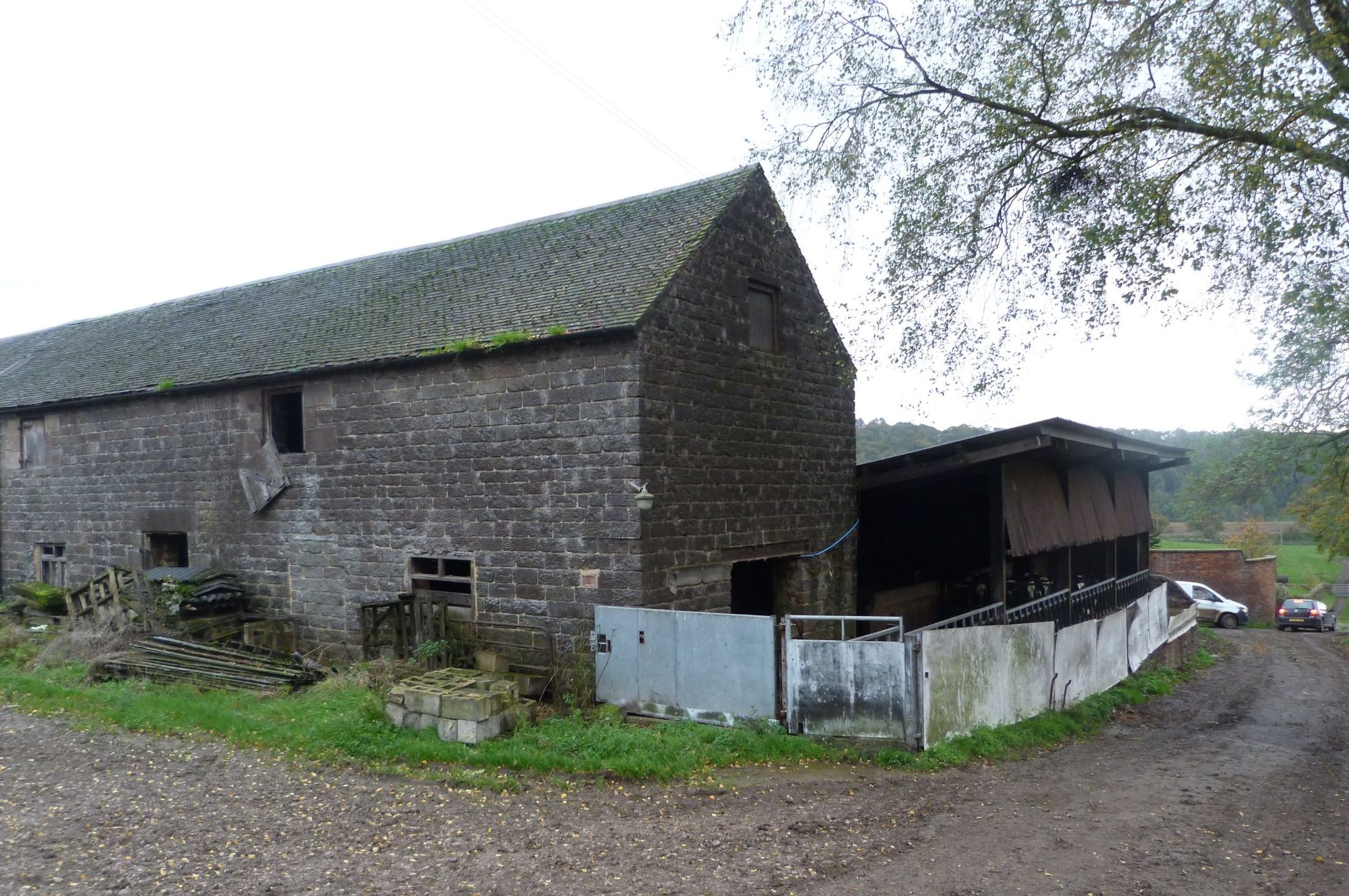Planning & Design have recently obtained planning consent for a project on a large plot of land in the rural location of Biggin by Hulland in the Derbyshire Dales. We were approached by the client to look at a scheme to transform a dilapidated farm cottage into a family home to raise their young children.
The site is very picturesque with a stream running through it and a naturally overgrown area of vegetation and fields beyond. The site also consists of an old steel framed metal agricultural shed, a storage building and two small outbuildings. Whilst doing some research we were able to get hold of an old photograph of the property of how it looked more than 100 years ago which was very interesting to see how the property and site has evolved over the years.
As the cottage is in such a poor state of repair, the initial proposal was to demolish and replace it with a scheme that was sensitive to the site’s context and include an additional extension. However, the council advised at the pre-application stage that it considered the building to be a non-designated heritage asset which is worthy of retention. We therefore went back to the drawing board to design a scheme which retains the existing cottage and erect a substantial extension in place of the outbuildings. The extension will have a contemporary character whilst reflecting the agricultural origins of the site. The cottage will be renovated throughout and brought back into use as a family home fit for the 21st century.




